Hieroglyphs aren’t words—so which civilization invented the idea of writing?
This question originally appeared on Quora: Who were the first literate people on earth? Answer by Stephen Tempest, works in marketing and has a degree in history.
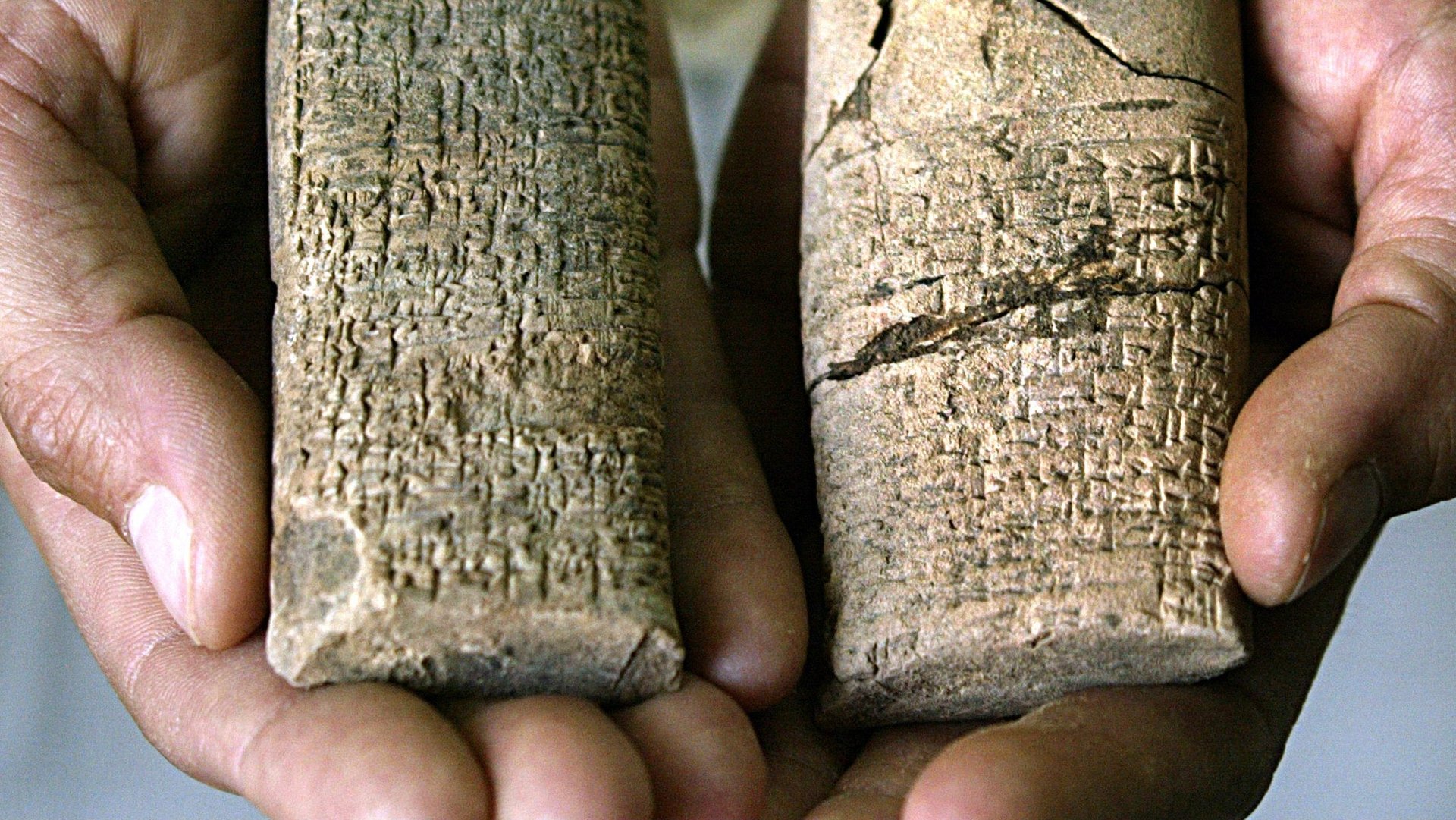

This question originally appeared on Quora: Who were the first literate people on earth? Answer by Stephen Tempest, works in marketing and has a degree in history.
The Iraqis.
There is evidence dating back to Neolithic times in various parts of the world of people using pictograms—that is, drawing little pictures of objects to represent those objects. They might be scratched in stone, incised into pottery, or carved into bone or shell. Examples have been found in China (at Jiahu in Henan province), in southern Europe (at Vinča in Serbia), in the Indian subcontinent (at Harappa in Pakistan), in Egypt (at Girzeh), in Mesopotamia, and in Central America (near Veracruz in Mexico). The Chinese symbols, dating back to around 6600 BC, are currently believed to be the oldest discovered.
However, most scholars do not class these symbols as “writing.” They do not appear to be capable of communicating complex or abstract ideas. They are pictures, or at most signs—perhaps used for identification, claiming ownership, or as memory aids.
The general consensus in academic circles is that the earliest “true” writing system emerged in Sumeria (modern-day southern Iraq) around 3100 BC, and was fully developed with a substantial body of written texts and literature by around 2600 BC.
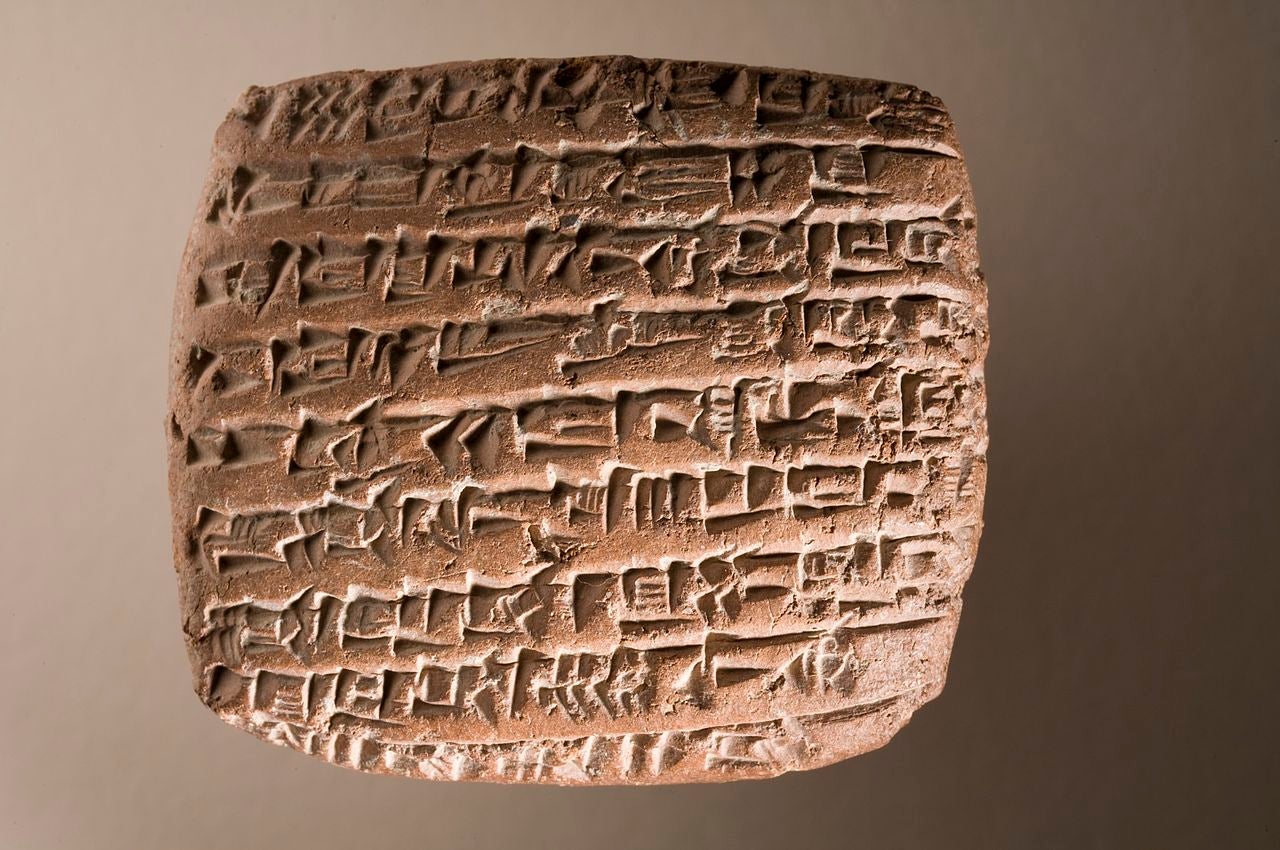
The Sumerians wrote by pressing a stylus made from a cut-off reed into a tablet of soft clay, then leaving the clay out in the sun so it dried out and became hard. The stylus made a series of wedge-shaped marks in the clay, so their writing system is called cuneiform (Latin for “wedge-shaped”).
The earliest clay tablets used pictograms, and seem to have been accounting records used by merchants or government officials. These early tablets would show a stylized picture of some trade good—an ox, a sheep, a loaf of bread—followed by a series of incised marks that appear to be numbers. Sumeria was the first urban civilization, and it seems that the need for writing developed alongside the emergence of the first cities, markets, and organized states.
Gradually the system developed in sophistication and complexity, until by around 3100 BC it was capable of conveying abstract ideas and grammatical sentences. A key breakthrough is believed to have occurred over the next 500 years or so, when the writing system became phonetic—that is, the characters were used to represent sounds rather than words. That allowed the entire Sumerian language to be represented using only a small set of standardized symbols. Cuneiform was a syllabary, where each character stood for the sound of a compete syllable—similar to modern Japanese hiragana and katakana.
After the Sumerian civilization was conquered by the Empire of Akkad, the Akkadians adopted their writing system for their own. It continued to be used throughout the Middle East, including by the Babylonians and Assyrians, for a couple of thousand years, until being replaced by the Aramaic alphabet during the time of the Achaemenid Persian Empire.
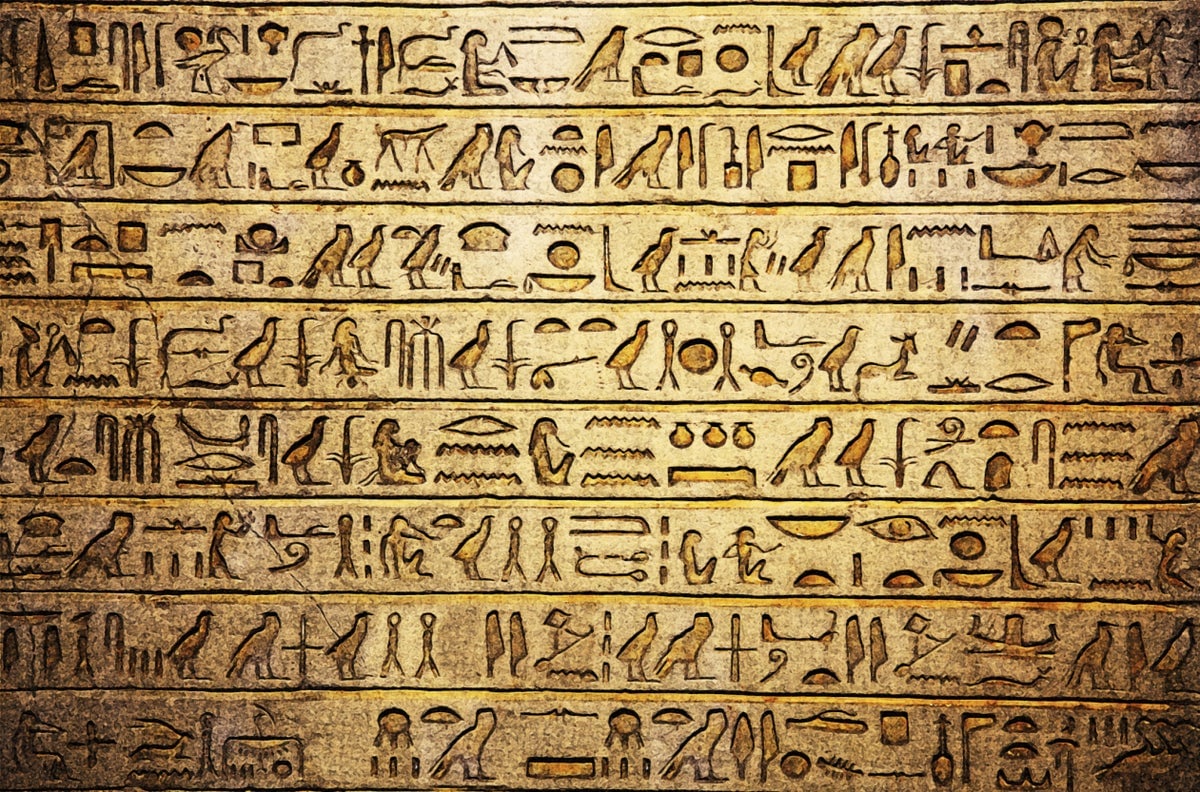
Egyptian hieroglyphs are another early writing system, but it’s believed that they were developed very slightly later than Sumerian cuneiform. The earliest known full sentence written in hieroglyphs is from the tomb of the Pharaoh Seth-Peribsen who died circa 2686 BC, though isolated examples have been discovered from earlier. Like cuneiform, hieroglyphs remained in use for thousands of years until the arrival of foreign conquerors with their own writing systems—and even under the Persians, Greeks, and Romans, hieroglyphs continued to be used for certain ritual purposes such as inscriptions on temples and statues. The last known authentic hieroglyphic inscription is from as late as 394 AD.
Since Egypt and Sumeria were close enough to have trade links with each other, and writing appeared in Egypt shortly after it did in Sumeria, many scholars believe that the Egyptians took the concept of writing from their neighbors. However the actual form of their writing system is dissimilar, so other academics dispute the connection and believe that hieroglyphs were invented independently.

The Harappan script is controversial. Artifacts from the Indus Valley civilization have been discovered with symbols written on them, which some scholars claim represents a fully-fledged writing system, but others argue it was only a set of pictograms, patterns, and signs used for identification. There are certainly no long documents written in this script (if that’s what it was) comparable to those found in Sumerian, Babylonian, or Egyptian archives, only brief inscriptions of half a dozen symbols or so. The Harappan inscriptions are roughly contemporary with Sumerian and Egyptian, with some early examples possibly dating back to around 3500 BC—but most dating from 2600 to 1900 BC. With the collapse of the Indus Valley civilization, there is no solid evidence of writing in India for over a thousand years until the introduction of the Brahmi script in around 500-300 BC.
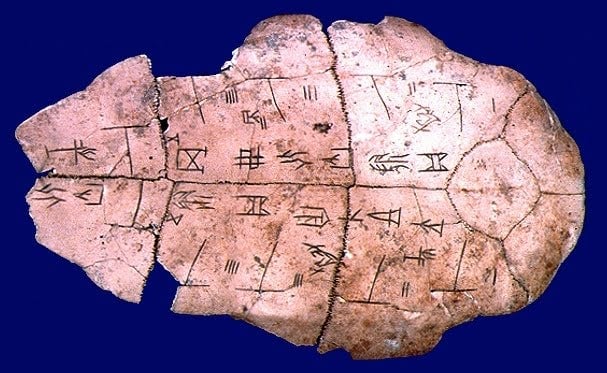
The Chinese writing system dates back to the Shang dynasty in around 1200 BC, so it’s substantially later than the Mesopotamian and Egyptian systems—though probably developed independently out of the earlier systems of pictograms. The first writings are the so-called “oracle bones”: the Shang kings would incise questions to the gods on pieces of ox bone or tortoise shell, then heat the bone until it cracked and read a message about the future from the shape and direction of the cracks. Eventually, scribes would make a habit of recording the prophecies obtained in this way, and these developed into historical annals.
The Chinese writing system spread alongside Chinese culture and religion into their neighboring countries such as Japan, Korea, and Vietnam. Here it would often be modified to suit the local language, or a new writing system (such as hangul in Korea) developed in order to meet the perceived deficiencies of hanzi.
The idea of an alphabet, with each symbol representing an individual phoneme rather than a syllable or word, was developed in the second millennium BC in the Middle East. The Egyptians conceived the idea of using phonetic symbols as a superscript to explain the pronunciation of more obscure hieroglyphs (in the same way that modern Japanese text sometimes includes furigana, a pronunciation guide in syllabic script written above a rare kanji). This idea was adopted by the people of the Levant: a few inscriptions—little more than graffiti—have been found using the phonetic symbols by themselves from as early as 1850 BC.
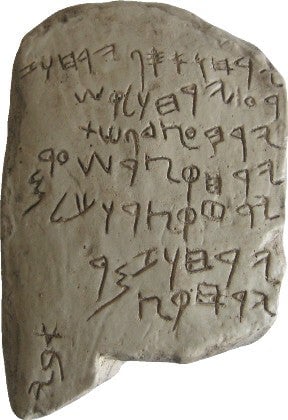
By around 1050 BC, the Phoenicians, inhabitants of modern-day Lebanon, had standardized an alphabet of 22 characters (only consonants, no vowels), probably based on the Egyptian system, to write their language. The Phoenicians traded and colonized extensively through the Mediterranean, and spread the idea of their alphabet with them. In around 800 BC the Greeks adopted a modified version of the Phoenician alphabet, adding the concept of vowels. The Greek alphabet in turn was modified by the Romans to create the Latin alphabet we use to write English.
In the other direction, the Phoenician alphabet was also adapted to write the Aramaic language used by the Persian Empire. The Aramaic alphabet in turn was the ancestor of the modern Hebrew and Arabic scripts, and is generally believed (though some dispute this) to have spread as far as India and inspired the creation of the Brahmic scripts used to write Sanskrit and modern Hindi.
More from Quora: